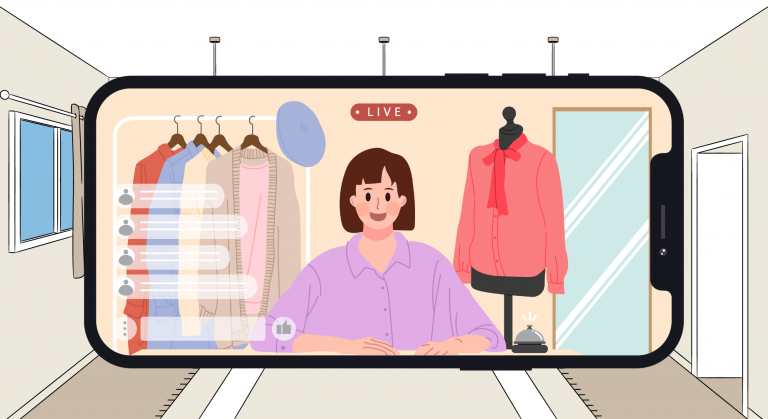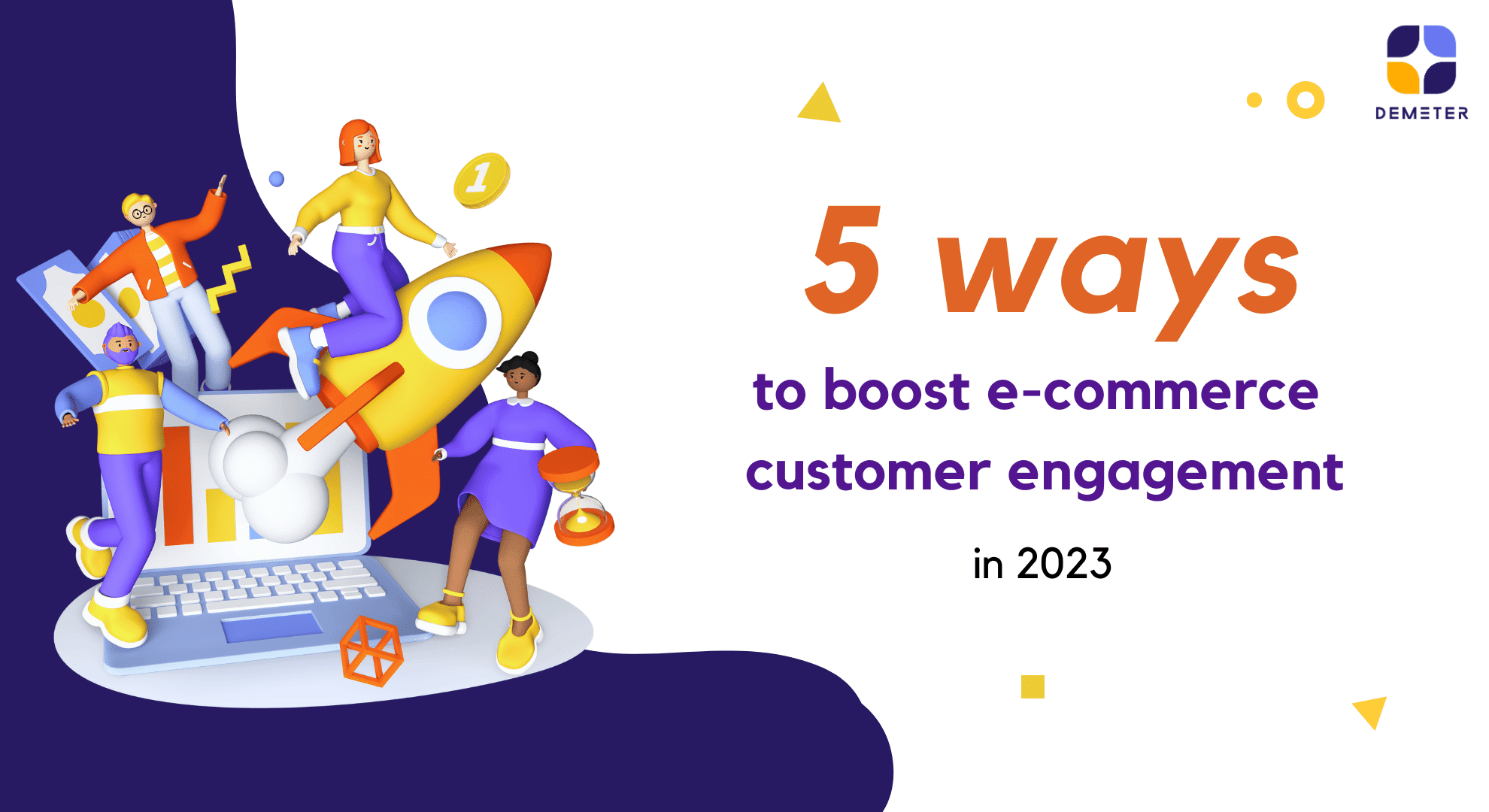In this new world, customers have sky-high expectations of service. It’s no longer enough to offer great products—customers demand great experiences on every channel, on their own terms.

What is customer engagement?
Customer engagement is the ongoing interactions between a brand and a buyer across various customer communication channels such as ecommerce websites, social media, advertising, email, live chat, phone support, and more.
Some customer engagement examples include:
- Exclusive promotional offers or discounts for loyal customers
- Timely push notifications
- Personalized welcome messages for new customers
It’s easy to lump customer engagement, experience, and satisfaction together. And while these concepts certainly influence one another, there are important differences between each idea:
- Customer experience (CX)
is a consumer’s perception of every interaction they have with a brand, whether paying a bill online or viewing an ad on Instagram. - Customer satisfaction
It measures how well a company’s product or service meets buyers’ expectations. - Customer engagement
is the process of forming long-term relationships with your audience. In customer engagement, the buyer is an active participant rather than a recipient of an experience.

Why is it important to e-commerce?
Customer engagement is important for e-commerce because it boosts brand loyalty. It can also give you a view into what customers actually want from your brand, which can help drive your business strategy.
The benefits include:
- Increase customer satisfaction
Loyal customers lead to more satisfied customers, and that’s good for your bottom line. According to the Harvard Business Review, companies at the top of their industries in satisfaction rankings grow revenue roughly 2.5 times as fast as their peers, and they deliver two to five times the shareholder return over 10 years.
Competition in e-commerce is razor-sharp today, and customers are more than willing to try a new brand if yours doesn’t live up to their expectations.
However, many businesses are willing to risk customer experience when under pressure to deliver profits. Companies will often resort to exorbitant fees, cutting product quality, and reducing customer service to save a dime.
This short-sighted outlook only undermines the true goal: creating long-term profitability.
- Higher customer retention rates
Today’s customers have more shopping options than ever before. That makes it expensive to attract new customers. As the competition grows ever more fierce, brands need to compete on emerging media platforms and offer personalized service to stay top of mind.
What used to pass as good service a few years ago doesn’t cut it today. Customers are more discerning than ever, so retaining their trust and business is paramount. Brands must be smarter about using the data they have to create better CX—or risk losing their customers entirely.
5 ways to improve customer engagement
1. Personalize the customer experience
Companies and consumers agree: personalization matters. When done well, personalization creates a better customer experience and drives revenue. The stakes are high—it’s no longer an option to deliver a bland experience to your customers.
According to research from Twilio, 66 percent of consumers will leave a brand if their experience isn’t personalized. Real-time personalization can keep your customers happy in the long term, too. Twilio found that 86 percent of consumers say personalized experiences increase their loyalty to specific brands, which improves customer lifetime value.(Soure by The State of Customer Engagement Report)

2. Using artificial intelligence (AI)
AI is omnipresent in e-commerce, and for good reason. The whole experience is becoming more seamless, and customers are getting more comfortable with the idea. According to our Customer Experience Trends Report 2023, 77% of customers say they prefer using chatbots for simple questions because they get answers faster.
AI-powered bots can improve the quality of customer engagement by:
- Recognizing patterns in customer data and sentiment to give your agents real-time, actionable insights
- Giving customers more complete information about products, reducing shopping cart abandonment rates
- Triaging customer inquiries and handling simple questions like “where is my order?” to take pressure off of your staff and speed up time to resolution
3. Offer omnichannel customer support
Shoppers want to shop on their own terms. They also want to find support on the channels of their choice, whether that’s live chat, social media, the phone, email, visiting a physical store, or sending a text message. Measure how customers use all of your shopping channels, and tailor your omnichannel retail strategy to meet their needs.
According to Zendesk’s latest CX Trends Report, 70 percent of consumers say that a seamless experience will lead to them purchasing more from a company.
4. Create a smoother returns experience
Making it easy for customers to return or exchange their products is a big opportunity that many companies overlook. Simple, no-hassle returns are often a motivating factor in making a purchase to begin with. And it shows you are here for your customers at every stage of the journey.
Beyond that, returns are a golden opportunity to create a better customer experience. Retailers can look at data to see if there are sticking points that could be easily solved. For example, is the color of your product not accurate in your ecommerce store? Is the description vague? Does it take too long to ship products, resulting in higher returns? Savvy merchants see returns as a chance to make things right.

5. Try livestream commerce
Livestream commerce is quickly becoming one of the hottest trends in retail. The idea was first popularized in China and combines a livestream with ecommerce. Viewers can watch and shop at the same time, encouraging real-time engagement and a closer connection with the brand.
But the benefits of livestream commerce go beyond brand recognition. Retailers report conversion rates approaching 30 percent—up to 10 times higher than in conventional ecommerce.
You can create a sense of intimacy and urgency with this emerging shopping platform in ways that were impossible just a few years ago. For example, you can tap into new audiences with influencer partnerships and exclusive offers only available by livestream.
Customer engagement is the key success for your business
Customer needs are constantly changing, and the bar has never been higher for CX. Brands that want to succeed need to invest in a full customer engagement strategy. When the entire customer journey is tailored end to end, across physical and digital channels, retailers reap the benefits.
Reference: Zendesk
Demeter ICT – No. 1 Zendesk Premier Partner in Asia Pacific and Great China Region.
For more information, Zendesk product and services, please contact us.







